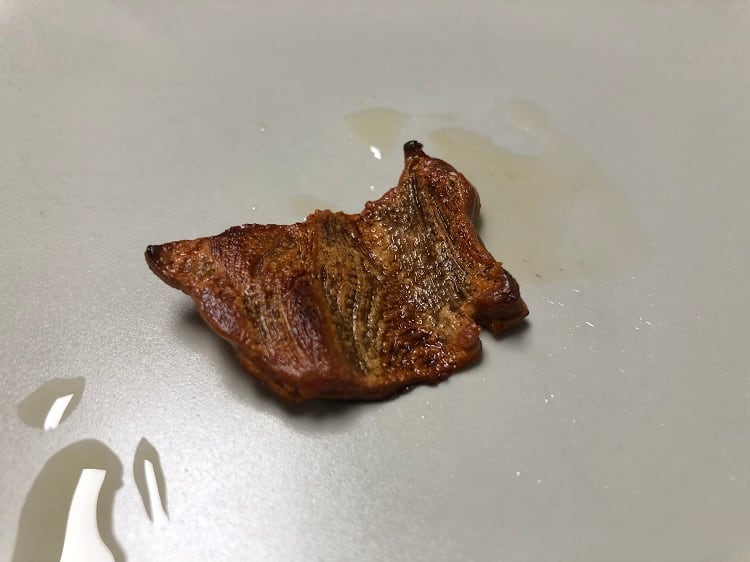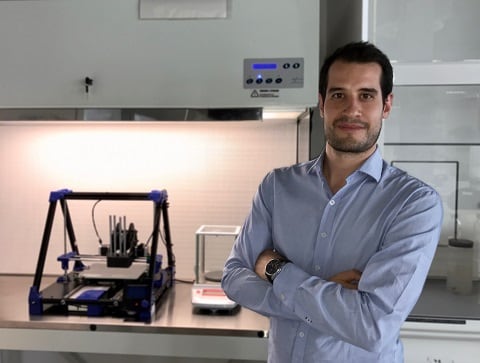NovaMeat, a start-up based in Barcelona, Spain, is working to develop plant-based food products for the world’s growing populations.
In doing so, founder and CEO Giuseppe Scionti hopes to challenge “current unsustainable and inefficient livestock production” systems and support healthier, more ‘humane’ and sustainable food supply.
NovaMeat’s solution aims to mimic meat with plant-based analogues of fibrous meats and seafood, starting with beef, salmon, and pork.
In 2018, the start-up developed what it claims was the world’s first 3D-printed plant-based beef steak. And now, NovaMeat has announced version 2.0 of its plant-based steak analogue – a product that simultaneously exhibits the texture and appearance of a beef whole muscle cut.
‘Bio-hacking’ tissue structure
NovaMeat’s technology ‘finely tunes’ the structure of plant-based proteins at the microscopic level – a technique that Scionti discovered while working as researcher and assistant professor in bioengineering at the University of Catalunya.
“While I was researching [the regeneration of] animal tissues through bioprinting technologies for biomedical and veterinary applications, I discovered a way to bio-hack the structure of the native 3D matrix of a variety of plant-based proteins to achieve a meaty texture,” he explained. Upon discovery, Scionti since filed an international patent (pending) in 2018.
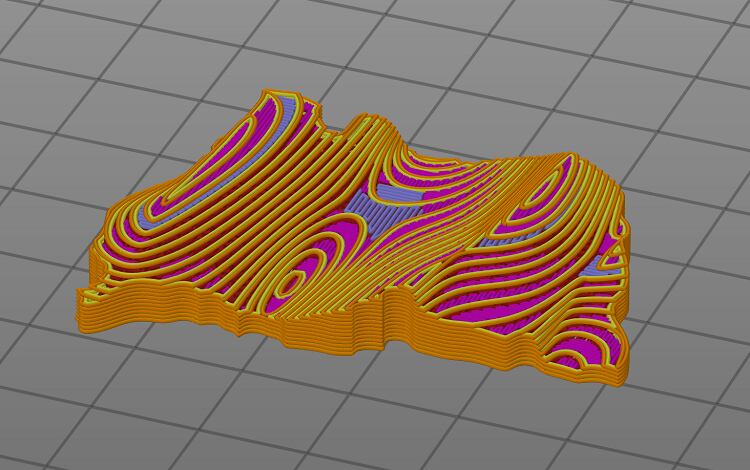
The Good Food Institute {GFI), which promotes clean meat and plant-based alternatives to animal products, has voiced its support of NovaMeat’s technology, which director of science and technology David Welch described as ‘flexible and tunable’.
“To meet the growing demand for meat with more sustainable plant-based products, we need to deliver the taste, texture, and appearance that meat-eaters want. While plant-based meat products have improved significantly in recent years, perfecting the sensory experience remains a key challenge for the industry,” he said.
“NovaMeat’s bioprinting-based technology provides a flexible and tunable method of producing plant-based meat, with the utility to create different textures from a wide variety of ingredients all within a single piece of meat.”
Welch also applauded the technology’s versatility, which he said may help food producers create a wider range of meat substitutes.
“Low and high-moisture extruders are the primary method currently used to restructure plant proteins to create the texture of meat. While extrusion works well for some applications, this method may not be ideal for mimicking all types of animal meat.
“Alternative technologies like NovaMeat’s give plant-based meat manufacturers a wider array of tools to mimic all types of meat and seafood.”
Texture, appearance, taste, and nutrition
NovaMeat is working on four unique parameters, the founder told FoodNavigator: texture, appearance, taste, and nutrition.
The start-up achieved the first parameter, texture, in its NovaMeat 1.0 product. “We managed to achieve resistance in terms of mechanical properties, especially in terms of compression resistance and traction, in the same range as for a variety of meats and seafoods,” he explained.
“Especially for the whole muscle cuts, which was something special. It is unique compared to ground meat, which is more common in plant-based and even in cultured meat. So in both cases, texture was very important.”
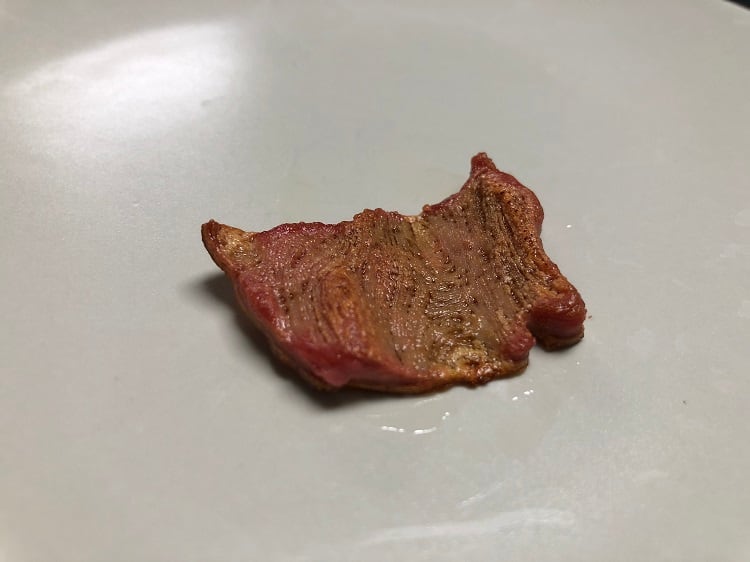
The second parameter relates to appearance, at both a macro and micro level. This is what has been achieved in NovaMeat 2.0, said Scionti. Not only does the product match the colour of a whole beef muscle cut, but the external and internal structures mimic the fibre structure of beef.
Next on the cards is NovaMeat 3.0 and 4.0, which will focus on taste and nutrition.
The start-up is currently using pea protein and rice protein, as well as algae fibres and some fats – either olive oil, or a combination of expeller-pressed canola and coconut oil – in its formulation. “We already have a mixture of ingredients that we know is being used by other companies to achieve the taste, but we [haven’t yet] focused on selecting the right lipids – the fats that give the real taste,” the founder elaborated.
The last step will be to team texture, appearance, and taste together with nutrition. “We want to [our product] to have proper nutritional properties. We want this to be part of a nutritious, varied, and balanced diet,” Scionti told this publication. “If it is a meat substitute, we want it to have the right amino acid balance, etc.
“Eventually, we might think about including other protein sources, like beans for example, and will try with other fats as well. In fact, being able to try new formulations and iterate quickly is a big advantage of 3D printing.”
Commercialisation strategy
NovaMeat has planned a two-stage business model to bring its meat analogues to market. The strategy will allow for short term revenue, as well as longer-term partnership projects.
The small-scale business model relies on NovaMeat’s 3D printing technology. The start-up hopes to commercialise at this scale in the restaurant sector before the end of 2020.
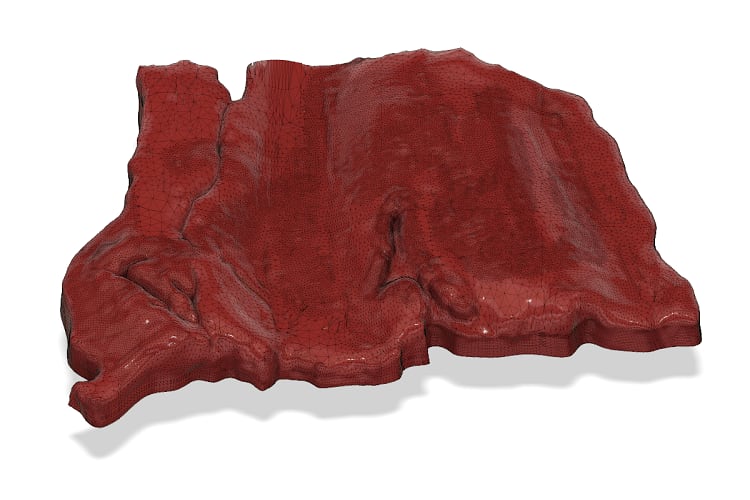
Moving forward, NovaMeat wants to partner with ‘top restaurants’, as well as with space agencies. “Achieving highly customised and texturised food options with limited resources is a very interesting sector for space agencies – for current missions and future space travels,” he explained.
The founder is also eyeing collaborations with cultured meat companies. Often ‘smaller players’ in the cultured meat space need to demonstrate they ‘have more than a vial of cells’, Scionti explained, “and that these cells can be efficiently translated into an actual product”.
NovaMeat will provide its platform, including the printer and capsules, to help cultured meat companies translate their cells into three-dimensional functional products with relevant size and structural integrity.
The large-scale business model will kickstart in 2021 when NovaMeat builds its pilot plant. At this stage, the start-up will move from 3D printer to a novel micro-extrusion machine capable of producing 50kg (to begin with) of plant-based meat analogue per hour.
Rather than sell finished products in retail, NovaMeat hopes to license out its technology in the form of plant-based formulations and machinery to ‘big name’ food manufacturers, which will in turn sell NovaMeat’s products under their own brand names.
While NovaMeat is currently focusing on beef, in time it is also hoping to apply similar commercialisation strategies to salmon and pork analogues.


